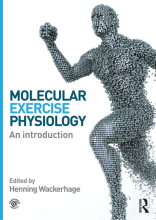T2: Mechanisms
12 important questions on T2: Mechanisms
Indicate what is true about mechanisms of toxicity
-inhibition of oxygen binding to hemoglobin by CO is an example of non covalent binding causing toxicity
-Lipid peroxidation is can be caused by reactive oxygen species (ROS)
-Methemoglobinemia is caused by chemicals that cause electron transfer that oxidizes the Fe in hemoglobin from Fe2+ to Fe3+
Which chemicals act by non-covalent interactions?
What is true about reactive oxygen species (ROS)
n the Haber Weiss reaction superoxide anions and hydrogen peroxide are converted to hydroxyl radicals
Reactive oxygen species are toxic because they are able to modify biomolecules
- Higher grades + faster learning
- Never study anything twice
- 100% sure, 100% understanding
The formations of reactive oxygen species (ROS)
What is lipid peroxidation
What interaction does Carbon monoxide (CO) has?
Example of non covalent binding
How does tetrodotoxin interact
This toxicant blocks the Na channels in the neurons. Therefore you will get paralysed or die.
Example of non covalent blocking
How does saxitoxin interact
Example of non covalent blocking.
How does aflatoxine B1 interact?
it will be activated through metabolism and is the most common cause of liver cancer. It causes a mutation on the P53 tumor suppressor gene and therefore a tumor can develop easier.
How does acetylcholinesterase (AchE) interact?
Example of covalent binding, covalent irreversible AChE inhibition
What is the difference between apoptosis and necrosis?
Necrosis is cell death which is no longer in control. This results in breaking down the membrane and the inside of the cell will come out.
Apoptosis is sort of repair
Necrosis is sort of disrepair
What are the variations in toxic response
- age
- nutrition and life style diseases
- gender
- combined exposures
The question on the page originate from the summary of the following study material:
- A unique study and practice tool
- Never study anything twice again
- Get the grades you hope for
- 100% sure, 100% understanding






























